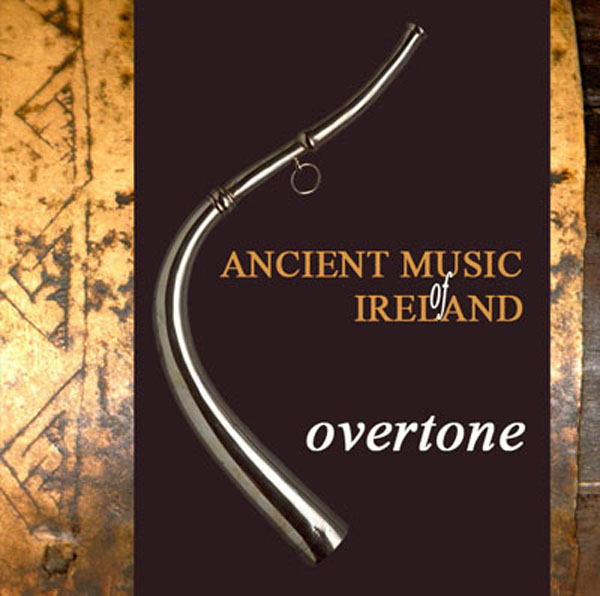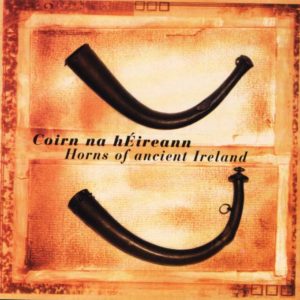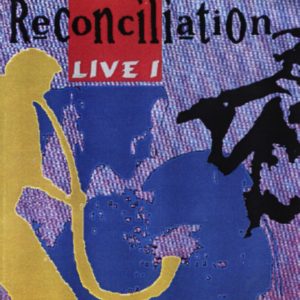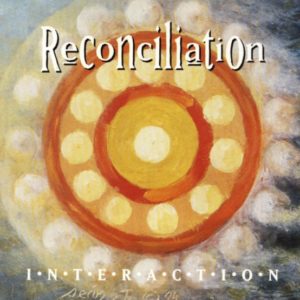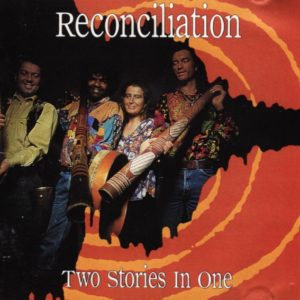
Sound Library
Plus Kontakt Instrument
Overtone – Ancient Music of Ireland
Overtone – Ancient Music of Ireland
The album ‘Overtone’ was first released at a live concert in St. Nicholas Church Galway on Friday the 13th of November 2009. The 13 tracks were chosen from the Ancient Music Ireland archive specifically to bring out the overtone qualities which had been discovered in a number of original ancient horns. Normally the ‘overtone’ phenomenon is only expressed through singing techniques from Nepal, Tibet and Tuva. However, during a recording and mixing session of surviving complete Late Bronze Age Irish horns in 1994 for The National Museum of Ireland, it was perceived that a number of higher notes were audible over the fundamental tone of the lower instruments.
Experimentation on reproductions using the similar mouth and tongue movements to those employed in throat singing created the same effect. It also became apparent that two or more horns played together appeared to amplify higher tones. In 2008 Simon O’Dwyer was requested by Musicologist and Producer John Purser to play horns as a musical accompaniment to an old Scottish Piobaireach played on viola by Bonnie Rideout. The combination of the strings and the horns worked together to bring out a wonderful rich overtone combination. Following this success it was decided to go through the archive and pick tracks some of which contain overtone sounds.
01 Ar Aghaidh, 1.33 min – version 1.
One the 29th of January 1998 Simon O’Dwyer travelled to Prestwick Airport outside Glasgow, Scotland to take possession of the first reproduction trumpa créda (Loughnashade trumpet) for Ancient Music Ireland, made by John Creed. After four months playing and learning the instrument, Ancient Music Ireland was invited to launch the trumpa on the famous live Irish television show, ‘The Late Late Show’. Two days before the programme, a demo was requested by the show’s producer. To this end the trumpa was recorded accompanied by a dord íseal, bodhrán and Indian parade frame drum. The tune gives a flavour of how an army may have sounded marching towards their enemy to do battle in the time of Cú Chulainn. The title ‘Ar Aghaidh’ is Irish Gaelic for ‘at you’ or ‘at your face’.
Maria Cullen O’Dwyer – bodhrán, Indian parade drum
Simon O’Dwyer – trumpa créda, dord íseal
Rod Callan – engineering and mastering. Recorded at ‘The Works Studio’ Dublin, May 1998
02 Kiltulla Sessions, 7.09 min
In the summer of 1996 a group of friends came together in a small cottage in Kiltulla just outside Galway City in Ireland. They had been playing sessions in the bars of Galway and it was hoped that the new sound which had evolved could be captured on tape. A DAT Walkman and two PZM wall microphones were strategically set up in the kitchen and a number of tune combinations were played live. This track shows off the rich colour of two bass horns working together, fulfilling a beautiful wash which uplifts the melody of the uilleann pipes and is superbly complimented by a ‘full on’ percussion.
Mark Farrelly – uilleann pipes
John Meskell – dord íseal
Frank Ryan – cactus drum
Maria Cullen O’Dwyer – Indian parade drum
Simon O’Dwyer – dord íseal
Simon O’Dwyer – recording. Recorded at Kiltulla Cottage, Kiltulla, Co. Galway June 1996
Harry Bradshaw – post mastering
03 Berlin’s Jig, 4.18 min
In 2006 The 6th International Study Group of Music Archaeology was attended by Ancient Music Ireland. As part of the week-long event, five musicians came together to play an impromptu musical piece exploring a combination of Bronze Age instruments from North West Europe. Following some exploratory rehearsal it was decided to base the tune around the Irish jig rhythm and spacing. The exalted audience consisted of 50 of the leading scientists and scholars in the world of music archaeology.
Joachim Schween – lur
John Purser – dord íseal, crotal
Phil Conyngham – dord íseal, crotal
Maria Cullen O’Dwyer – bodhrán
Simon O’Dwyer – adharc, crotal
Maria Cullen O’Dwyer – recording
Harry Bradshaw – post mastering
04 McDougall’s Gathering, 7.44 min
McDougall’s Gathering is an old Scottish Piobaireach so called because tunes in this tradition were originally composed for Great Highland pipes. In the 18th and 19th Centuries AD, musicians adapted them for violin and viola. This style has been re-introduced by American viola player Bonnie Rideout. Her powerful evocative playing is enhanced to a remarkable degree by the backing of Irish and Scottish bronze horns, interacting with the tones of the strings to create overtones of an almost magical quality.
Bonnie Rideout – viola
Simon O’Dwyer – dord íseal, two tracks of dord ard and two tracks of adharc
John Purser – arrangement
Harry Bradshaw – post mastering
05 Along the Shore, 4.05 min
As a part of renovations of the display areas of The National Museum of Ireland, Ancient Music Ireland was requested to conduct a ‘once off’ recording session at the Museum in May 1994. Sound samples were recorded on 6 original Bronze Age Irish horns from all over Ireland over a three hour period. A seventh was thought to be two delicate to play. The recordings were brought into studio and over tracked in a number of combinations to explore possible relationships among horns. Several playing techniques were employed in the samples including flanging, fazing, note bending, continuous drone and repeat rhythm. This particularly fine tune involves four instruments taking different parts. During the mixing, two very important discoveries came out. In the first instance it was noticed that the four appeared to be very well in tune with each other. Secondly, as the tracks built up, a higher overtone series became evident. ‘Along the Shore’ combines rich underlying drone with a pulsing repeat rhythm in the centre and higher horns going off at intervals. The whole is full and modern and yet played on instruments that are actually 3,000 years old.
Simon O’Dwyer – Clogherclemin horn (Co. Kerry, Ireland) – dord íseal, Roscrea horn (Co. Tiipperary, Ireland) – dord ard, Derrynane horn (Co. Kerry, Ireland) – adharc, Drunkendult horn, (Co. Armagh, Northern Ireland) – adharc
Rod Callan -, engineering, mixing and mastering
Harry Bradshaw – post mastering
06 Lilting horns, 2.57 min
Recorded in 1992 by Irish Australian group ‘Reconciliation’ in Sydney Australia. Lilting horns was the first recording in modernity of three Irish Bronze horns played together. The tune was composed as a waltz with dord íseal playing bass rhythm and dord ard and adharc working together to form the melody. During the final mix a small error resulted in the dord íseal being reduced temporarily in volume during the tune. This however, allowed for the dord ard and adharc to feature together as a complimentary pair.
Alan Dargin – dord ard
Phil Conyngham – dord íseal
Simon O’Dwyer – adharc
Mike Gissing, Phil Conyngham – engineering, mastering
Recorded at Digital City Studios, Kings Cross, Sydney, Australia, 1992
07 Elephants, 3.32 min (This track is also on ‘Old to New’ album track 02)
Early in 2002 following the successful reproduction of the mayophone, a tune was composed to capture its essentially new sound. The relaxed rhythm is created by hand playing on a bodhrán and crotal. Intermittent adharc is added and the mayophone takes a wild jazzy lead. The whole suggested elephants sounding off. Hence the name. Much credit is due to Rod Callan whose great ear and expertise made it happen.
Simon O’Dwyer – bodhrán (hand played), adharc, crotal, mayophone x 2 tracks
Rod Callan – engineering, mastering, post mastering
Recorded at The Works Studio, Dublin Ireland, 2002
08 The Butterfly, 6.22 min
The butterfly is an unusual interpretation of a traditional Irish tune composed by Tommy Pots and originally recorded by the Bothy Band in 1975. This version is played in three parts, the first as a slow air, the second as a reel and ending again as a slow air. The melody is emotionally expressed on a flute depicting the life of the butterfly whilst the accompanying horns represent the surrounding flying insect hum. As the butterfly emerges from the chrysalis, mandola, mandolin and bodhrán come in to celebrate the new brief life. Finally the air mourns the passing of a beautiful creature. Ancient Music Ireland is very grateful to Pat Power who allowed this recording to be included from his album ‘Sin a Bhfuil’ (SHIN A WILL).
Derek O’Shea – flute
Pat Power – mandola
Gerry Whelan – mandolin
Kevin Whelan – mandolin
Perry Power – bodhrán
Simon O’Dwyer – dord íseal and dord ard
John Hicks – sound engieer, masterer
Tommy Pots – original composition copyright Woodtown Music
Harry Bradshaw – post mastering
Recorded at The Old Post Office, Corrandulla, Co. Galway, Ireland, 2004
09 Newgrange Singing, 0.35 min
This short piece is coupled with tracks 10A and 11A. The three display the remarkable versatility of the adharc. Newgrange, Co. Louth, Ireland is famous as one of the largest complete buildings surviving from the Neolithic period (Late Stone Age). It is particularly known for the long passage which goes into a central cross shaped space with a corbelled roof. On the first new day after the Winter Solstice morning, December 22, the sun shines through a box window over the entrance, travels down the passage and illuminates the inner chamber. Musical playing inside is normally not permitted but Ancient Music Ireland was fortunate to be allowed to test the acoustics of the space with the bronze horns in 1989. The room behaved very much as a good recording studio would in that the sound was completely flat. However, it was noted with some surprise that the ‘G’ note from the adharc appeared to establish a standing wave. The effect was as if the entire building, a quarter of a millions tons of stone, was vibrating in sympathy. This is clearly audible on the recording along with distinctive overtones though it had not been realised what these were at the time.
Simon O’Dwyer – adharc
John Purser – producer
Harry Bradshaw – post mastering
10 The Crimlin Reel, 0.41 min
The unusual open mouthpiece in the side of the adharc allows the player to produce a wide variety of sound. This, combined with a good back pressure in the horn facilitates the creation of a continuous pulsing rhythm through the use of circular breathing. ‘The Crimlin Reel’ begins with a slow overtone rich note and then launches into a fast three part reel. The tune is inspired by the mountains of Connemara, Co. Galway, Ireland. This recording was played live as part of a demonstration/performance for the Heritage in Schools Scheme to the children of the primary school on Inis Mean, Aran Islands, Co. Galway, Ireland in May 2007.
Simon O’Dwyer – adharc
Maria Cullen O’Dwyer – recording
Harry Bradshaw – post mastering
11 For Armagh, 0.38 min
Following an invitation to attend the Armagh Pipers Festival in November 2005, Ancient Music Ireland brought a number of Irish horns to exhibit and conduct experimental playing with the pipers from Irish and International musical traditions. A particularly interesting collaboration was that of an adharc being played with a set of Sardinian triple pipes. Both instruments have their origins in the Bronze Age and both employ circular breathing. We also know that triple pipes were played in Ireland and Britain during the Early Medieval Period – at least until the 10th Century AD. Many thanks to Barnaby Brown for allowing us to include this tune in the album.
Barnaby Brown – Leonidas
Simon O’Dwyer – adharc
Maria Cullen O’Dwyer – recording
Harry Bradshaw – post mastering
12 Tua Ceatha (rainbow), 1.38 min
In the summer of 1998 Ancient Music Ireland was granted permission by The National Museum of Ireland to view a number of Ancient Musical instruments with the intention of making reproductions. One of these is known as the Ard Brin trumpet after the location where it was recovered in 1801, ‘The Mound of Ard Brin’, Co. Down, Northern Ireland. The trumpet was in excellent condition though the original mouthpiece and center join were not present. A ‘new’ center join had been made in the 19th Century AD and much to everyone’s delight, the go ahead was given by the Museum to play the trumpet briefly as a musical test. This task automatically went to the most qualified of the team :- John Kenny, master classical trombonist and carnyx player. The trumpet was assembled in an upright ‘S’ position with the bell pointing forward at the bottom and the mouthpiece end presented to the player at the top. John Kenny used one of his trombone mouthpieces whilst Simon O’Dwyer on his knees, held his hands around the center join to create an air seal and the proceedings were recorded on a DAT Walkman by John Purser. Clearly John Kenny was inspired by the occasion as he played a most beautiful impromptu melody and percussive tune which displayed in a wonderful way the sweet tone of the horn and the accuracy of the intervals between the notes. The sound could be modern but yet there is no doubting the ancient quality. This is the only recording of the original Ard Brinn trumpet being played.
John Kenny – Ard Brin trumpet, (trumpa fada), Ard Brin, Co. Down, Northern Ireland.
Simon O’Dwyer – instrument holder
John Purser – Recording
Harry Bradshaw – post mastering
13 The Dream of Angus, 6.05 min
From the early days, Ancient Music Ireland have had a close collaboration with contemporary classical composer Michael Holohan. Michael, having studied archaeology began to take a deep musical interest in the ancient instruments as the on-going research revealed new aspects to them. Many of his compositions draw on Legend and the famous prehistoric sites and buildings around Ireland. ‘The Dream of Angus’ was originally commissioned to be performed at the State opening of Bru na Boinne, the new visitors centre at Newgrange, Co. Louth, Ireland in June 1997. The composition, through the use of ancient and modern instruments seeks to evoke a mood from the distant past. It is one of the first Irish compositions to fuse elements of traditional music with the modern ‘spectral’ techniques of French composers Tristan Murail and Gerard Grisey. This performance took place on the 27th of November 2006 in the John Field room at The National Concert Hall, Dublin, Ireland to a packed house.
Michael Holohan – composer, conductor, percussion
Anna Devlin – soprano
Susan Doyle – flute
Tadgh Murphy – violin
Helen Leahy – violin
Aisling Dowry Byrne – ‘cello
Breifne Holohan – guitar
Mick O’Brien – uilleann pipes
Cathrina Smith – percussion
Simon O’Dwyer – dord íseal, dord ard, throat singing, crotal, psalter horn
Harry Bradshaw – recording, post mastering


